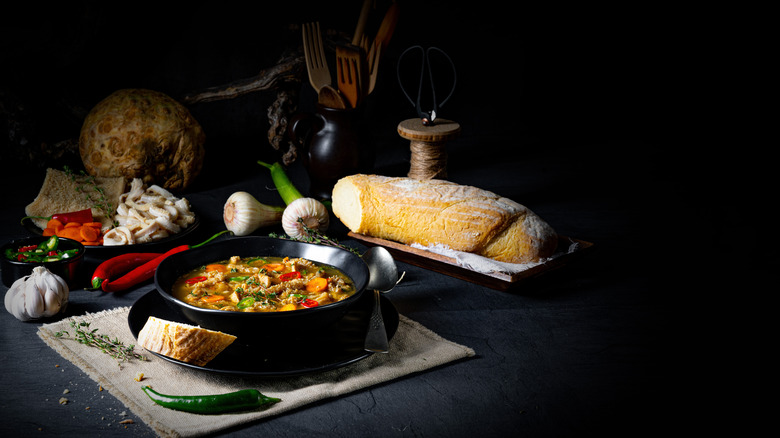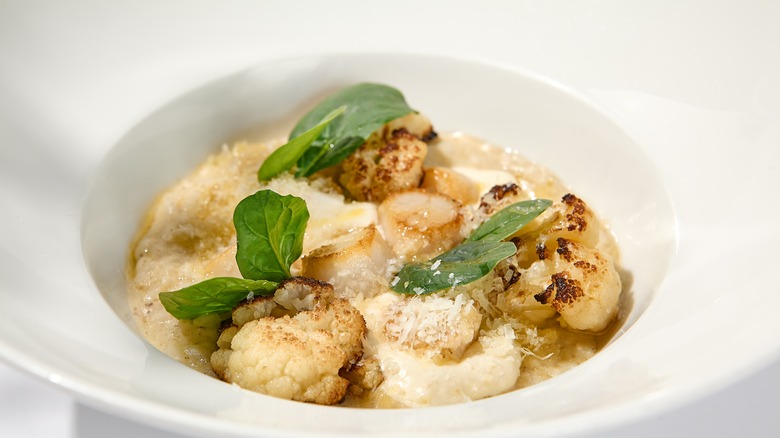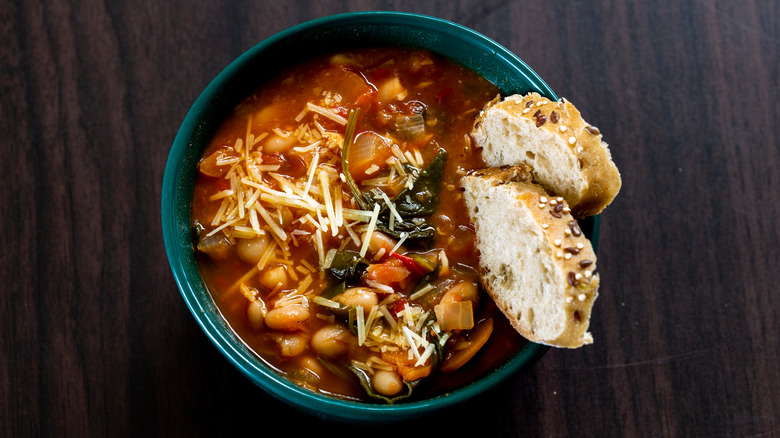Zuppa Vs. Minestra: What's The Difference?
Italian cuisine has a rich history, from its Mediterranean Amalfi coast to the snow-peaked mountains in South Tyrol. Pasta, fish, meat, and vegetable dishes can be found throughout the country, each highlighting its region's seasonal fare and cultural preferences. And while most immediately list their favorite pasta dishes when talking of Italian food, soup also has a time-honored place in Italy's cuisine, and its richness is no less defined (via Great Italian Chefs).
Many menus that feature Italian words such as "secondi" and "al dente" may list their soups under the category "zuppa." The regular English-speaking (or duolingo subscribing) diner can assume that "zuppa" is Italian for soup and go about ordering. Minestrone, Italian wedding, and ribolitta are among some of the most common and recognizable Italian soups (via Taste Atlas). But what is minestra? The answer lies in a bowl. And like so many other fabled stories of Italian dishes, it's as unique and diverse as Italy itself. Let's digest this one spoonful at a time.
Minestra means to administer
Minestra is a very old word — according to Delishably, it predates "zuppa" by a couple of centuries. The word "minestra" comes from the Latin word "ministrare," which means "to administer" or, according to La Cucina Italiana, "to serve" because it was commonly served or administered by the head of the household out of a bowl, or pot, or central vessel. This Italian Life explains that minestra was any meal served out of a single bowl or pot and was either the primary course or, in the case of the poor, the only course.
Today, minestra is often used to mean "first course" and are often dishes of grains, pasta, or even seafood cooked in broth. Spaghetti or risotto would be considered a "dry minestra," continues Delishably. Minestra always contains grains like barley or farro in addition to vegetables, says La Cucina Italiana. Minestrone (often confused with minestra) is one of the minestra soups and continues the tradition of using grain, like barley, to thicken it.
Zuppa means soaked in bread
Zuppa is, in fact, soup. Most likely, this word originated from the Gothic "suppa," which means "soaked in bread," via This Italian Life. Way back in history, the Goths were a Germanic tribe. So the German word "suppe" became zuppa. Soaked in bread is quite literal. Instead of dishes, many meats and stews were placed on "trenchers" of sliced bread, and whatever the bread soaked up was then boiled down for the servants later (via This Italian Life). Zuppa almost always has bread, never rice or pasta, says La Cucina Italiana. And since it was for servants, it never was seen on the tables of the rich, writes Delishably.
Many people recognize zuppa as "zuppa toscana" on Olive Garden's menu. But it is common throughout Tuscany as a dense soup with dark greens like collards or kale. In Siciliy, the soup is based on beans, and in Sardinia, with a rind of cheese, writes La Cucina Italiana. Zuppa represents the rise of what was once peasant food to a delectable dish and a great way to use up stale bread, and an excellent choice for minestra.


